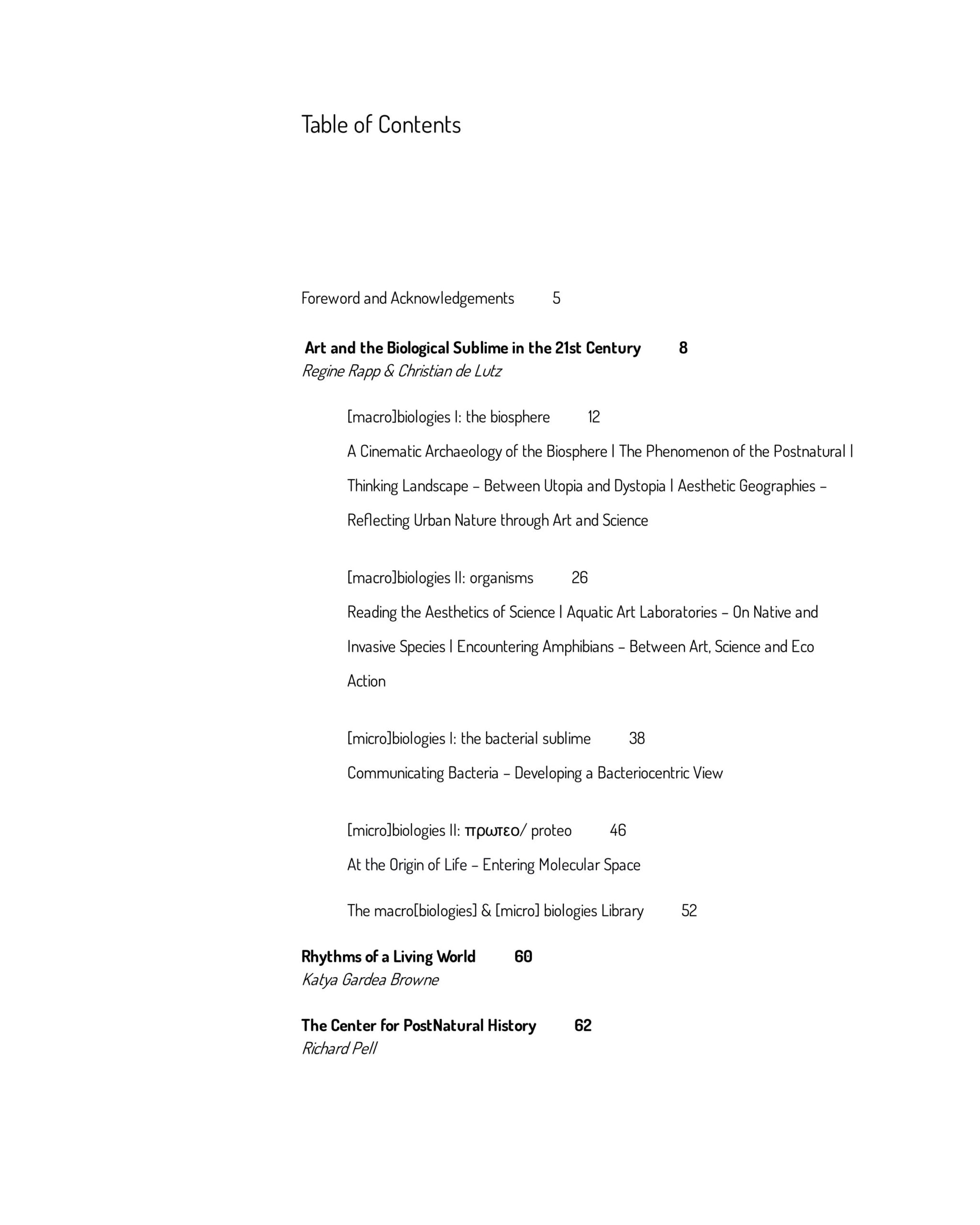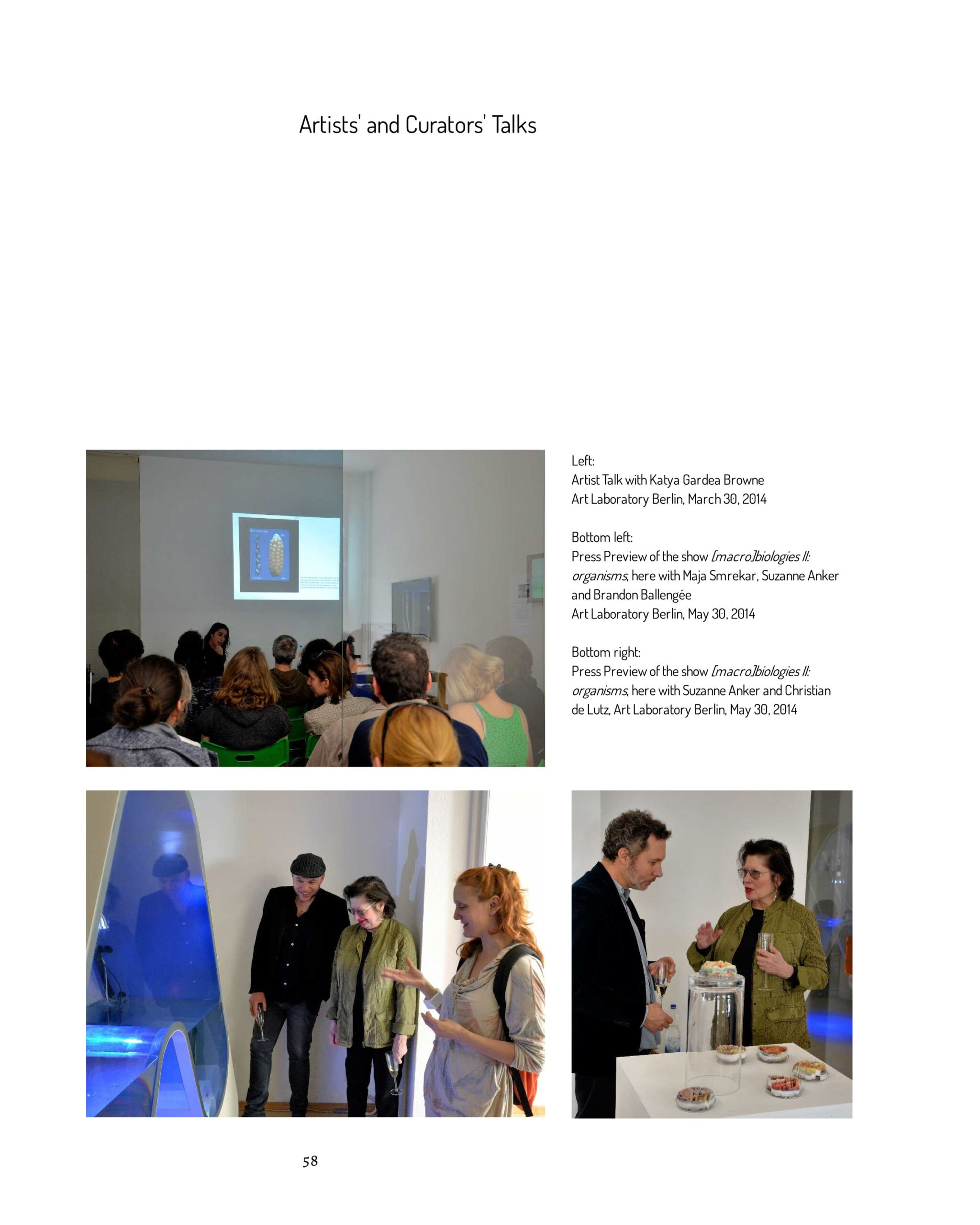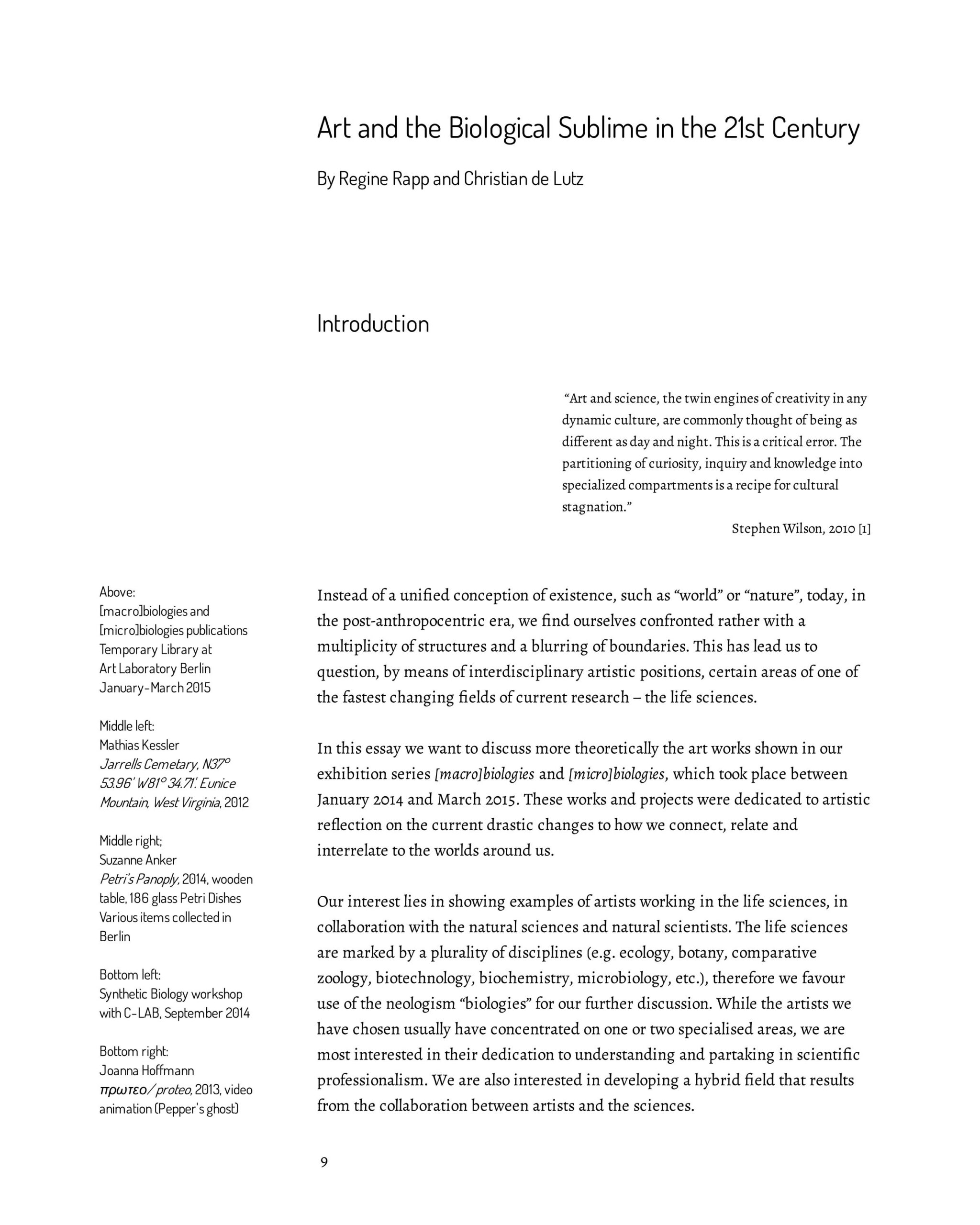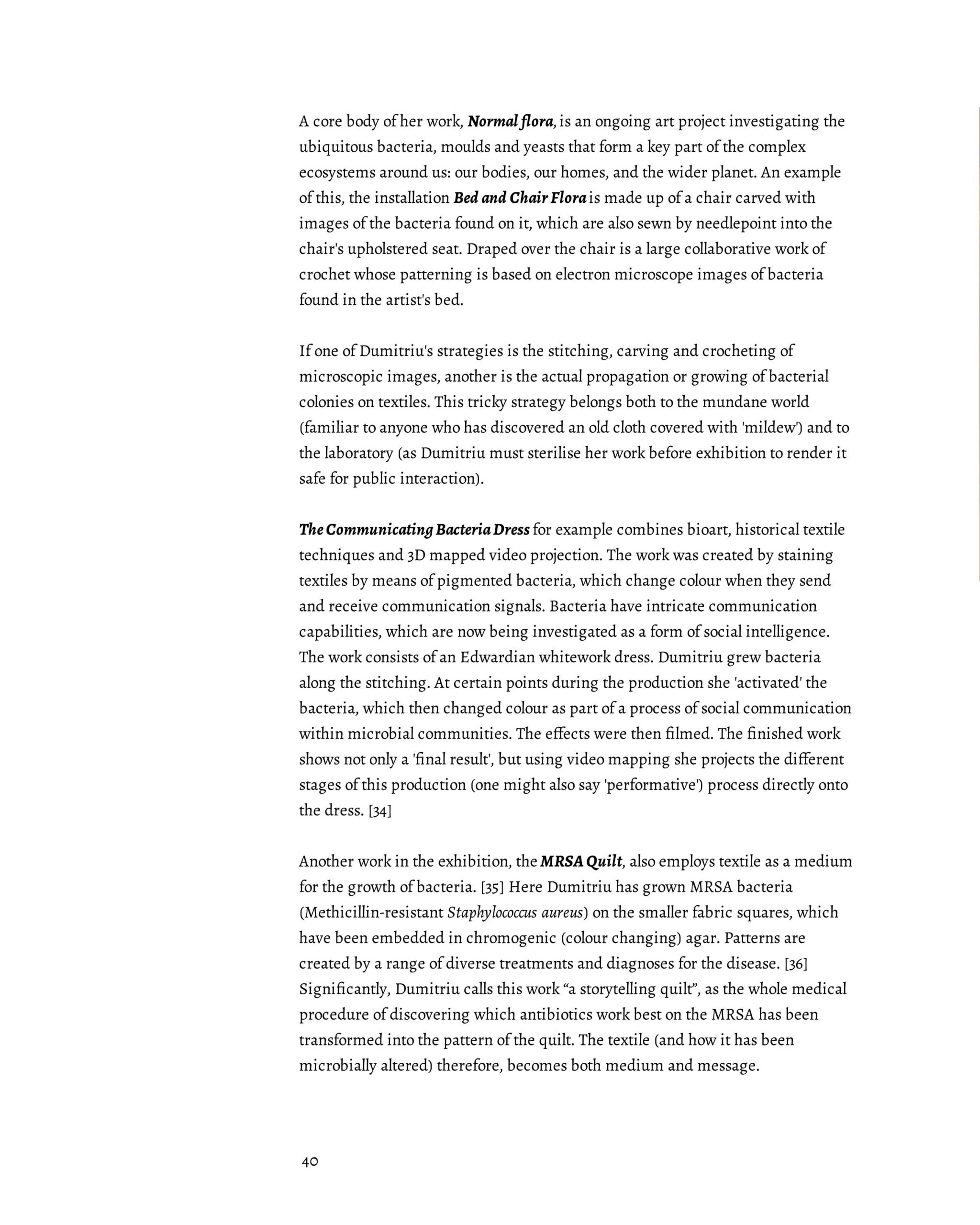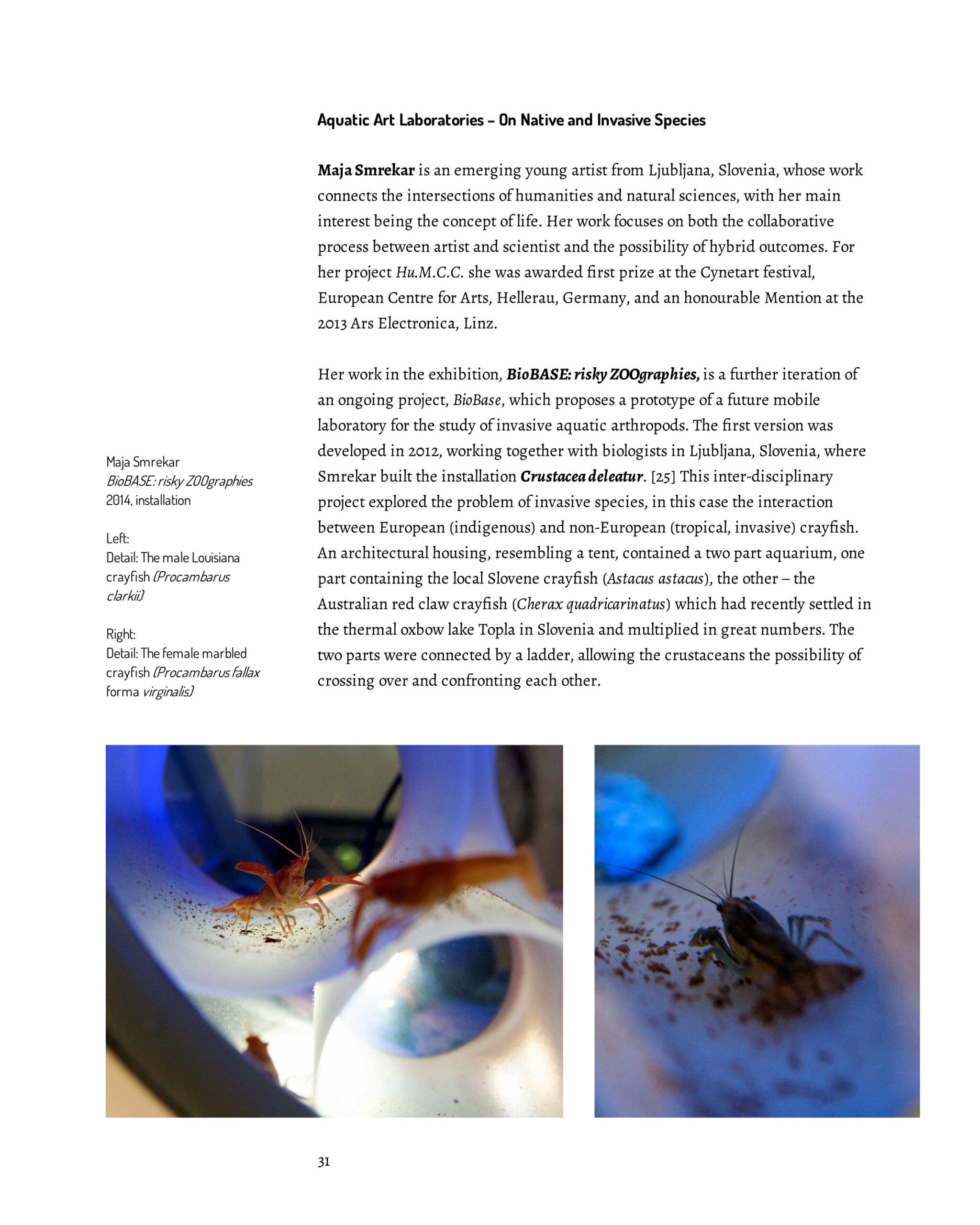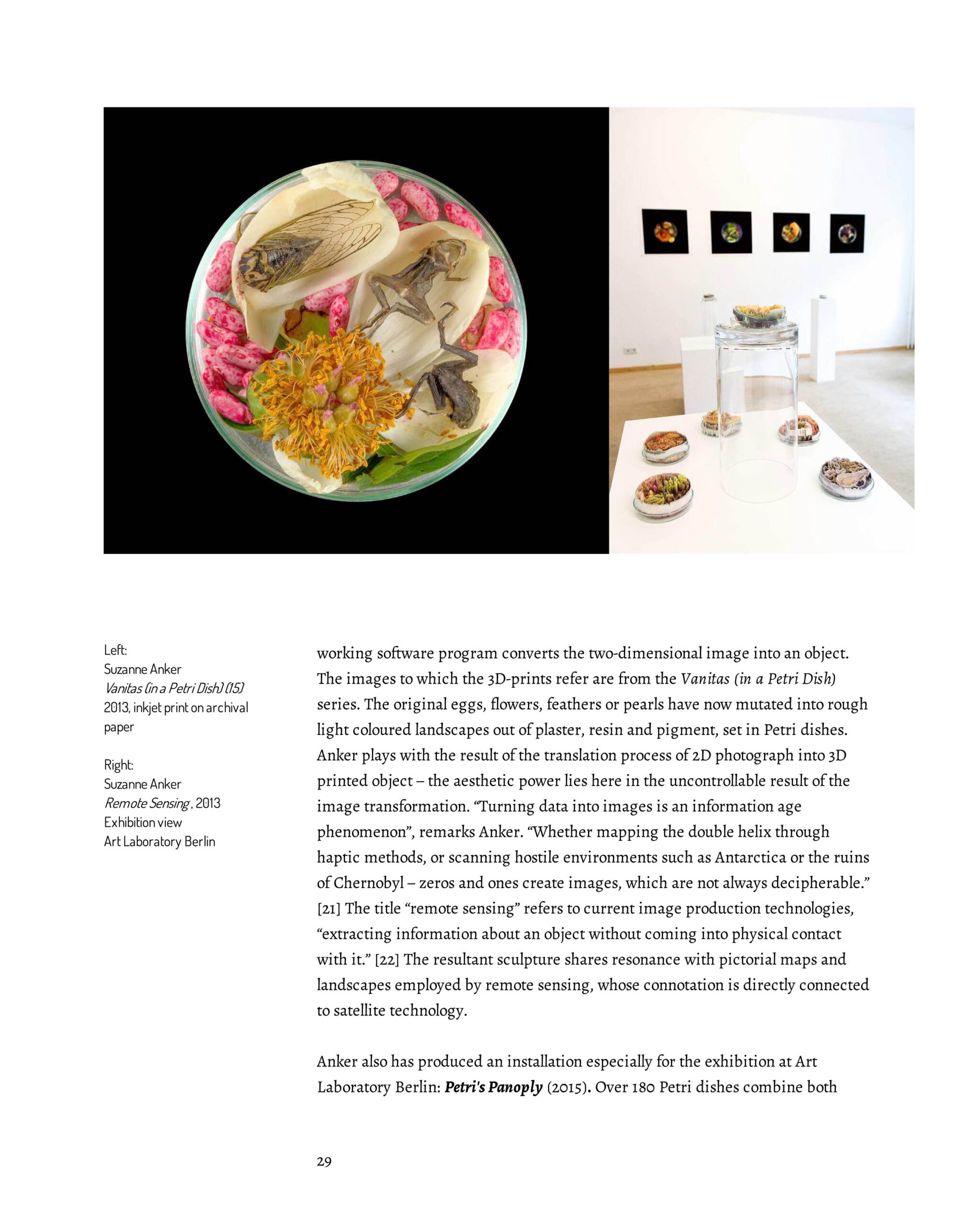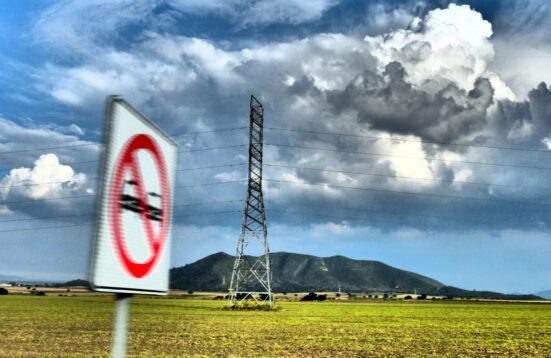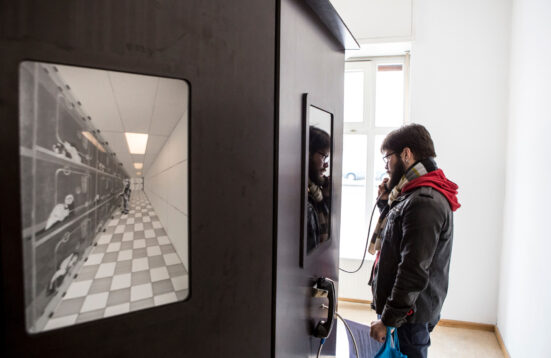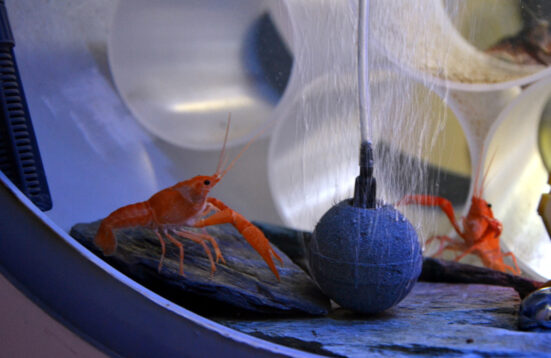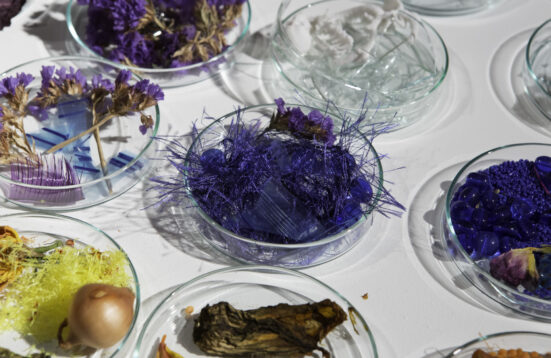[macro]biologies & [micro]biologies. Art and the Biological Sublime in the 21st Century
Die vorliegende Publikation ist eine nachhaltige theoretische Ergänzung zur Serie [macro]biologies & [micro]biologies, die bei Art Laboratory Berlin zwischen 2013 und 2015 stattgefunden hat. Das gesamte Programm bestand aus vier Gruppenausstellungen, mehreren Seminaren, Workshops und Gesprächen über zeitgenössische Kunst und die Lebenswissenschaften. Die vier Ausstellungen – biosphere, organisms, the bacterial sublime und proteo – zeigten herausragende internationale Künstlerinnen und Künstler, die an der Schnittstelle von Kunst und verschiedenen Feldern der Biologie arbeiten.
Neben der vertieften theoretischen Reflexion über die ausgestellten Künstler:innen präsentiert die vorliegende Publikation auch Künstler:innentexte und dokumentiert eine Reihe hervorragender Veranstaltungen der Serie – Workshops und Seminare mit den Künstler:innen, Biolog:innen und anderen Wissenschaftler:innen zu Themen der synthetischen Biologie, des spekulativen Designs, zu DYI-Bio Praktiken und zum Phänomen citizen science.
Einleitung (S. 9 – 11) des Aufsatzes von Regine Rapp & Christian de Lutz (S. 8 – 56):
Art and the Biological Sublime in the 21st Century
“Art and science, the twin engines of creativity in any dynamic culture, are commonly thought of being as different as day and night. This is a critical error. The partitioning of curiosity, inquiry and knowledge into specialized compartments is a recipe for cultural stagnation.”[i]
Instead of a unified conception of existence, such as “world” or “nature”, today, in the post-anthropocentric era, we find ourselves confronted rather with a multiplicity of structures and a blurring of boundaries. This has leads us to question, by means of interdisciplinary artistic positions, certain areas of one of the fastest changing fields of current research – the life sciences.
In this essay we want to discuss more theoretically the art works shown in our exhibition series [macro]biologies and [micro]biologies, which took place between January 2014 and March 2015. These works and projects were dedicated to artistic reflection on the current drastic changes to how we connect, relate and interrelate to the worlds around us.
Our interest lies in showing examples of artists working in the life sciences, in collaboration with the natural sciences and natural scientists. The life sciences are marked by a plurality of disciplines (e.g. ecology, botany, comparative zoology, biotechnology, biochemistry, microbiology, etc.), therefore we favour use of the neologism “biologies” for our further discussion. While the artists we have chosen usually have concentrated on one or two specialised areas, we are most interested in their dedication to understanding and partaking in scientific professionalism. We are also interested in developing a hybrid field that results from the collaboration between artists and the sciences.
Recently we have observed a growing range of collaborations between the fields of art and science (visual culture, art and sciences), creatively experimenting with the intersections and blurring the bounders of theory and art. In the 21st century the scepticism of interrelating art and science (e.g. Leo Steinberg’s sceptical attitude towards the connection of art and science), has finally been overcome, as today there are numerous theorists, artists and collaborative projects expressed through exhibitions and symposia, which reflect this fruitful, overlapping phenomenon.[ii] In this series of exhibitions, talks and workshops, Art Laboratory Berlin presents some outstanding artistic positions, which comment on current phenomena within the biologies.
[macro] and [micro] – from the Vast to the Minute
Our curatorial approach was to move from the vast to the minute. The [macro]biologies & [micro]biologies series proposed exhibitions, performances, and talks at Art Laboratory Berlin over the course of more than a year. The series moved from biosphere and landscape – systems, structures, creation and devastation (exhibition 1) to the level of nonhuman, multi-cellular ‚beings‘ (exhibition 2) and finally explored microorganisms (exhibition 3), as well as the minute particles or objects that form life or a basis for living (exhibition 4). Additionally a programme of talks, workshops, performances and other events with artists, scientists and scholars accompanied the exhibitions.
The core of the outstanding international artistic positions chosen shows a wide range of artistic strategies: Katya Gardea Browne carries out a cinematic archaeology of the biosphere; the Center for PostNatural History articulates the phenomenon of the postnatural; Mathias Kessler reflects landscape between utopia and dystopia; Alexandra Regan Toland develops an aesthetic of geographies while reflecting urban nature through art and science; Suzanne Anker critically reconsiders art history and creates a strong language of the aesthetics of science; Maja Smrekar produces an aquatic art laboratory for the study of native and invasive species; Brandon Ballengée performs both artistic and biological research on amphibians that involve ‚eco-actions‘ in wetlands; Anna Dumitriu displays communicating bacteria and develops a bacteriocentric view; and finally Joanna Hoffmann explores the origin of our life by entering the world of molecules.
We consider curating not only as presenting art works and projects, but as combining the artists‘ manifold ideas and theses in space – as spatialised theory. Therefore this theoretical text and publication is an essential part – a theoretical postproduction so to say – of the [macro] and [micro] series.
[…]
[i] Stephen Wilson: Art, Science + Technology, London 2010, p. 6.
[ii] Suzanne Anker, Introduction, in: Anker, Suzanne/ Talasek JD (eds.): Biofictions and Biofacts: Staking a Claim in the Biocultural Bank, Visual culture and bioscience: an online symposium, Volume 12 of Issues in Cultural Theory, Washington, D.C.: The Center for Art, Design and Visual Culture, University of Maryland and Cultural Programs of the National Academy of Sciences, 2009, p. 12.
Texte und Autor:innen
- Art and the Biological Sublime in the 21st Century | Regine Rapp & Christian de Lutz, S. 8 – 52
- Rhythms of a Living World | Katya Gardea Browne, S. 61
- The Center for PostNatural History | Richard Pell, S. 62
- Nature and Us – Between Boundless Desires and Limited Compassion | Mathias Kessler, S. 64
- Mapping the Urban Grind Mill | Alexandra Regan Toland, S. 66
- Petri’s Panoply | Suzanne Anker, S. 69
- BioBASE – The Eco Utopian Agent | Maja Smrekar, S. 71
- The Cry of Silent Forms | Brandon Ballengée, S. 72
- The Bacterial Sublime | Anna Dumitriu, S. 75
- πρωτεο / proteo | Joanna Hoffmann, S. 76
- Reflecting my Artistic Practice and Collaborating with Art Laboratory Berlin | Pinar Yoldas, S. 79 – 80
- Biostrike as Soil Art: Biotech Guerrillas in the Post-Antibiotic Age | Denisa Kera, S. 83 – 88
- Under the Surface, under the Skin. The Use of Synthetic Biology within the Artistic Practice of C-LAB | Desiree Förster, S. 93

